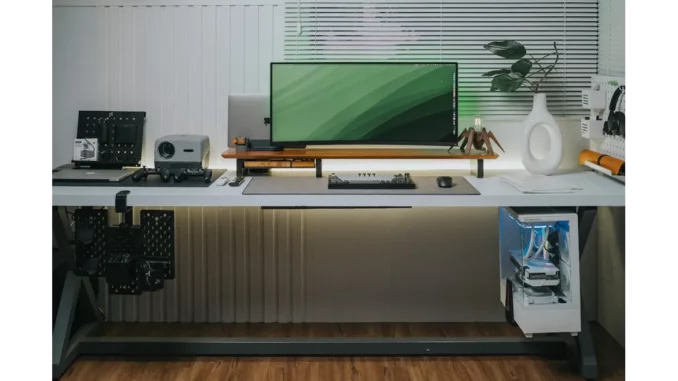
In today’s era of pushing for more sustainable architecture, achieving certifications like NABERS, BREEAM, LEED, SKA, and WELL is becoming increasingly important. To gain deeper insights into this evolving landscape, I recently sat down with Dan Voller, an A&D Manager with years of experience in sustainable building practices. Our conversation focused on the often-overlooked role of roller blinds in achieving these vital accreditations.
Successful low-energy building design hinges on careful planning. Focus360 Energy can help.
The Role of Roller Blinds in Sustainable Architecture
“When people think about sustainability in architecture, they often consider the big-ticket items like solar panels, green roofs, and energy-efficient HVAC systems,” Dan began. “However, something as seemingly minor as roller blinds can make a significant difference in a building’s sustainability profile.”
Dan explained that roller blinds contribute to various aspects of building performance, from energy efficiency to indoor environmental quality. These contributions are critical for meeting the stringent criteria of certifications like NABERS, BREEAM, LEED, SKA, and WELL.
NABERS: Measuring Year-on-Year Efficiency
The National Australian Built Environment Rating System (NABERS) primarily measures the energy efficiency of a building year-on-year by assessing energy, water, waste, and the indoor environment. “Incorporating roller blinds can enhance a building’s NABERS rating,” Dan noted. “Blinds can reduce the reliance on artificial lighting and HVAC systems, thereby lowering energy consumption.”
By optimising natural light and contributing to better thermal comfort, roller blinds can help buildings achieve higher NABERS ratings. Dan shared that the growing popularity of NABERS in the UK has made it an essential consideration for many projects.
BREEAM: A Holistic Approach to Sustainability
BREEAM, a widely recognised sustainability assessment method, evaluates energy efficiency, materials used, indoor environmental quality, and management processes. “BREEAM is perhaps the most comprehensive accreditation system out there,” Dan said. “It covers everything from the materials you use to how you manage the building.”
Dan pointed out that roller blinds play a crucial role in BREEAM’s glare control strategy. “Blinds that meet specific transmittance values and openness factors contribute significantly to the building’s overall rating. Pairing these with motorised or automated systems maximises performance and ensures optimal energy efficiency.”
LEED: An International Benchmark
The Leadership in Energy and Environmental Design (LEED) certification system, though developed in the United States, is used internationally. It evaluates buildings based on sustainable site development, water efficiency, energy performance, material selection, and indoor environmental quality.
“Roller blinds can help meet several LEED criteria,” Dan explained. “For instance, they can reduce light pollution if deployed at night and improve energy performance by lessening the reliance on HVAC systems.” Additionally, using fabrics with low or no volatile organic compounds (VOCs) and those made from recycled materials can further enhance a building’s LEED rating.
SKA: Focused on Fit-Outs and Refurbishments
The SKA Rating, developed by RICS, is specific to fit-outs and refurbishments in the UK. It assesses energy efficiency, waste management, and materials used. “SKA is unique because it was developed when BREEAM didn’t have its own office fit-out scheme,” Dan noted.
“Roller blinds can help achieve SKA ratings in several ways,” he continued. “For instance, in the D31 category for daylight glare control, the fabric must meet specific transmittance values and have a solar protective covering. Additionally, in the M23 category for window treatments, the fabric must have a high recycled content or meet other sustainability criteria.”
WELL Building Standard: Promoting Health and Well-being
Although the WELL Building Standard is not specifically focused on sustainability, it aims to promote health and well-being in buildings. “WELL covers areas like air quality, lighting, acoustics, and thermal comfort,” Dan said. “Sustainable roller blinds can contribute to achieving the desired levels of natural light and glare control, which are crucial for occupant comfort and well-being.”
Passivhaus: Energy Efficiency and Occupant Comfort
While not an accreditation, the Passivhaus standard is a rigorous energy efficiency standard. “Passivhaus focuses on reducing energy consumption and maintaining high levels of occupant comfort,” Dan explained. “The design and selection of blinds in a Passivhaus building should prioritise energy efficiency and airtightness.”
A Final Word
As our conversation drew to a close, it was clear that roller blinds play a pivotal yet often understated role in achieving building sustainability accreditations. “Though often overlooked, blinds are a simple yet effective way to make a building more sustainable,” Dan concluded. “Whether you’re aiming for NABERS, BREEAM, LEED, SKA, or WELL, incorporating the right blinds can help you achieve your sustainability goals.”
By shedding light on the versatility and importance of roller blinds in sustainable architecture, Dan’s insights offer a valuable perspective for anyone looking to enhance their building’s sustainability credentials.
Kenneth George


Be the first to comment